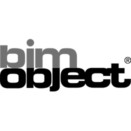If you have further questions, please Contact Us.
Where can I buy a European Home, Evonicfires or Focus Fireplace?
So that you may receive the best local service and support possible, we sell our products through a network of regional fireplace stores. Check out our Dealer Locator and find the nearest fireplace specialist near you.
How can I spec your products?
Please visit our Resources for Architects and Designers page to find CAD files, 3-part Specs, and other useful tools for design professionals.
Can a gas fireplace Installation be a DIY project?
Installation of the fireplace should be done by a qualified and licensed professional in adherence to NFPA code. Find a local fireplace dealer to ensure proper installation.
Can I mix the fire media?
Fire media is designed for specific use to a fireplace. Mixing media may result in potential performance and safety risks, as well as warranty issues. You should refer to the specific fireplace on the website for media suited to a particular model.
For our electric fireplaces, you can use any mix of non-combustible fire media.
What are the benefits of an electric fireplace?
- Flexibility & Safety – since venting isn’t necessary and heat is optional, you can install an electric fireplace almost anywhere in your home or commercial space.
- Plug and Play – No running gas lines and no chopping logs, simply use the electricity already running through your space.
- Ambiance & Comfort – Get a beautiful flame effect, with or without the heat, so you can enjoy the art of fire year-round.
How do I handle a warranty situation?
Please contact your local dealer in regard to your fireplace warranty.
How do I go about fireplace maintenance?
Being a gas appliance, we recommend an annual maintenance check with your dealer or a licensed professional to ensure peak performance from your fireplace.
Can I get a custom fireplace?
Our standard fireplaces are built to specific configurations; that being said, we are more than happy to talk to you about custom projects. We love to work out design challenges so please contact us and we’ll design an elegant solution together.
Alternatively, we also offer the dual-listed G Series natural gas burner which comes in three standard sizes (42”, 60”, and 72”). This flexible burner can be used in many custom hearth projects for a fraction of the cost of a truly custom-made burner.
Visit our G Series product page for more information.
What are the recommended building board materials?
For most installations, HardieBacker Cement Board can be used as it is a non-combustible building board. However, for larger fireplace installations we recommend Skamotec 225 or Promafour by Promat.
What’s the difference between the various vent styles for gas fireplaces?
B-Vent / Natural Vent – This type of fireplace venting uses an economical B-vent pipe for a chimney. Some of its features are:
- Uses room air for combustion and venting terminates above the roofline (like a furnace).
- Primarily decorative with an open front.
- Lower efficiencies than vent-free or direct vent.
- Zero clearance to combustibles.
- Relatively easy to install; space-saving depth.
- Ideal for locating anywhere in the home where B-vent can be installed.
- Lower cost than direct vent systems.
Vent-Free / Ventless – A vent-free gas fireplace operates without a chimney, flue or vent, so you can install one just about anywhere. Modern vent-free gas fireplaces offer the following benefits:
- Inexpensive and have low operating costs.
- 99% energy efficient.
- Provide warmth during power outages.
- Design-Certified to the latest national safety standards (ANSI Z21.11.2).
- Do not exceed 40,000 Btu/hr of heat output.
- Shorter flame heights than direct vent or natural vent.
Do vent-free gas fireplaces significantly diminish indoor air quality?
No. The primary gas combustion byproducts that can affect indoor air quality are carbon monoxide, carbon dioxide, nitrogen dioxide, oxygen, and water vapor (humidity). Today’s vent-free fireplaces operate well within national standards and recommendations concerning these five byproducts. The American Gas Association research division (www.aga.org) confirms these low emission levels.
Previously, questions remained about the long-term effect of vent-free gas fireplace emissions on indoor air quality. In 1995 the Vent-Free Gas Products Alliance of the Gas Appliance Manufacturers Association commissioned a study on indoor air quality as it relates to vent-free gas heating products in the home. The results proved that vent-free gas heating products meet or exceed the most current and applicable nationally recognized standards and guidelines for indoor air quality. [Source: ventfree.org]
Are vent-free gas fireplaces safe?
Yes. Since 1980, vent-free gas-heating appliances have been equipped with a unique safety feature called the Oxygen Depletion System (ODS). This is a function in a vent-free gas fireplace pilot which lifts the flame off the thermocouple and shuts down the fireplace if the oxygen level drops below 18% (normal atmospheric air contains about 20.9% oxygen).










